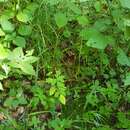Physical Description
(
İngilizce
)
USDA PLANTS text tarafından sağlandı
Perennials, Aquatic, leaves emergent, Terrestrial, not aquatic, Rhizomes present, Rhizome elongate, creeping, stems distant, Stems nodes swollen or brittle, Stems erect or ascending, Stems geniculate, decumbent, or lax, sometimes rooting at nodes, Stems caespitose, tufted, or clustered, Stems terete, round in cross section, or polygonal, Stem internodes hollow, Stems with inflorescence less than 1 m tall, Stems, culms, or scapes exceeding basal leaves, Leaves mostly basal, below middle of stem, Leaves mostly cauline, Leaves conspicuously 2-ranked, distichous, Leaves sheathing at base, Leaf sheath mostly closed, Leaf sheath smooth, glabrous, Leaf sheath and blade differentiated, Leaf blades linear, Leaf blades 1-2 cm wide, Leaf blades mostly flat, Leaf blade margins folded, involute, or conduplicate, Leaf blades mostly glabrous, Leaf blades scabrous, roughened, or wrinkled, Ligule present, Ligule an unfringed eciliate membrane, Inflorescence terminal, Inflorescence an open panicle, openly paniculate, branches spreading, Inflorescence a contracted panicle, narrowly paniculate, branches appressed or ascending, Inflorescence solitary, with 1 spike, fascicle, glomerule, head, or cluster per stem or culm, Infloresc ence lax, widely spreading, branches drooping, pendulous, Inflorescence a panicle with narrowly racemose or spicate branches, Inflorescence branches more than 10 to numerous, Flowers bisexual, Spikelets pedicellate, Spikelets laterally compressed, Spikelet less than 3 mm wide, Spikelets with 3-7 florets, Spikelets with 8-40 florets, Spikelets solitary at rachis nodes, Spikelets all alike and fertille, Spikelets bisexual, Spikelets disarticulating above the glumes, glumes persistent, Spikelets disarticulating beneath or between the florets, Rachilla or pedicel glabrous, Glumes present, empty bracts, Glumes 2 clearly present, Glumes distinctly unequal, Glumes shorter than adjacent lemma, Glumes 1 nerved, Glumes 3 nerved, Lemma similar in texture to glumes, Lemma coriaceous, firmer or thicker in texture than the glumes, Lemma 5-7 nerved, Lemma glabrous, Lemma apex acute or acuminate, Lemma awnless, Lemma margins thin, lying flat, Lemma straight, Palea present, well developed, P alea membranous, hyaline, Palea longer than lemma, Palea 2 nerved or 2 keeled, Stamens 3, Styles 2-fid, deeply 2-branched, Stigmas 2, Fruit - caryopsis.
Glyceria melicaria
(
İngilizce
)
wikipedia EN tarafından sağlandı
Glyceria melicaria, the melic mannagrass or northeastern mannagrass, is a perennial grass found in the eastern United States. Its specific epithet melicaria means "similar to Melica". Its diploid number is 40.
Description
Glyceria melicaria grows erect culms from a creeping base, with the solitary or few culms growing 0.6–1.2 m (2 ft 0 in – 3 ft 11 in) tall. Its leaf sheaths are smooth and its ligules are translucent. Its lax, elongate leaves are 25–40 cm (9.8–15.7 in) long and 2–7 mm (0.079–0.276 in) wide, and are smooth on their bottom side but scabrous on the top. Its linear-cylindrical panicle is 10–30 cm (3.9–11.8 in) long and nods down towards its end. The panicle's closely appressed floral branches have thirty to upwards of sixty spikelets per branch. Its appressed spikelets are about 4 mm long and have three to four flowers.[2] Its glumes are lanceolate and have acute apices. The lower glume is 1.3-2.4 mm and the upper glume is 1.7-3 mm. Its five- to seven-veined lemmas are 1.9-2.8 mm long, with its paleas roughly the same size. The grass flowers from late June to August.[3]
Glyceria × gatineauensis is a sterile hybrid between Glyceria striata and G. melicaria which has been found to occur in Quebec and possibly West Virginia. It resembles G. melicaria but has longer and less appressed panicle branches, growing up to 12 cm (4.7 in) long. The hybrid is a triploid.[3]
Habitat and distribution
Glyceria melicaria grows in wet soils, swamps, and wet forests from New Brunswick to Ontario and south into Illinois and the northeastern United States, as well as down into the Appalachian Mountains as far south as northern Georgia.[2]
References

- lisans
- cc-by-sa-3.0
- telif hakkı
- Wikipedia authors and editors
Glyceria melicaria: Brief Summary
(
İngilizce
)
wikipedia EN tarafından sağlandı
Glyceria melicaria, the melic mannagrass or northeastern mannagrass, is a perennial grass found in the eastern United States. Its specific epithet melicaria means "similar to Melica". Its diploid number is 40.
- lisans
- cc-by-sa-3.0
- telif hakkı
- Wikipedia authors and editors

